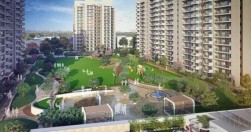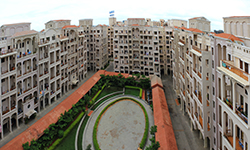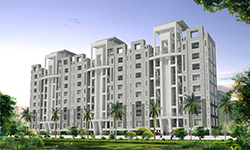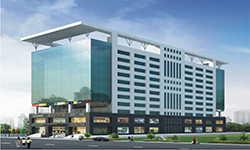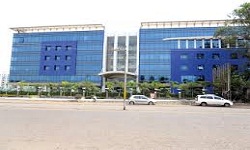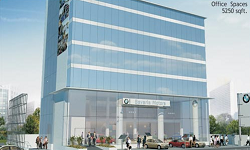Hollow Bricks – An innovative solution to the construction industry
Many people are not aware or pay very little attention to the walls when it comes to building a house. More than the frills like paint colours, interiors and the elevation; the structure is very important. There are many factors that need to be looked while building and bricks are the basic units for construction purpose. A number of factors should be taken into account while buying them for construction. The quality and the strength of the brick are very important and this varies from place to place. Most of the bricks are fired in kilns which are manually operated. This does not give quality bricks since there is no consistency.
What you need is a quality, durable, energy efficient brick that is being manufactured in a factory. With the need for such kind of bricks, Wienerberger, an Austrian company which is a leading producer of clay building materials for wall systems, facades, roofs and pavers for landscaping, has introduced Porotherm – clay hollow bricks – to South India.
What is a Porotherm brick?
• Porotherm clay building bricks are horizontally perforated clay bricks.
• The Porotherm brick also has the same concept. The perforations of the brick give a unique walling system which facilitates thermal insulation resulting in cooler interiors in summer and warm in winter.
• The two most prominent features of Porotherm bricks:
1. Made of clay, 100% natural
2. With Perforations (Horizontal perforations for non-load bearing and Vertical Perforations for load bearing)
Here are 5 things that make Porotherm superior to other walling solutions
1. Light weight and faster construction:
Porotherm bricks are 60% lighter than conventional walling material. They are easy to handle so helps improve productivity in masonry. They majorly contribute in reducing dead loads i.e.(the non-movable loads on the building like the weight of the walls, doors, windows, floor tiles etc.). Hence leads to substantial saving on structural cost. Being light weight also helps in transporting the bricks to different floors, and this is a great advantage especially for high rise buildings. In most construction sites in India, use of cranes is negligible, at the sites depend on labourers who manually off load construction materials from tricks and carry them to the different floors. An average labourer can pick only one concrete block at a time owing to its heavy weight and this ultimately affects the construction timelines. In case of Porotherm, one can easily carry two to three bricks at a time, there by completing the wall much faster. Owing to uniformity on the sides of the bricks, lack of sharp edges, also makes it easier to handle the bricks.
Post wall construction, curing time required for Porotherm wall is less compared to conventional walling materials thereby allowing builders and owners relatively faster construction.
2. High compressive strength and life span:
Well…being light weight definitely doesn’t mean a weak product. Porotherm bricks possess high compressive strength of ≥3.5 N/mm2, which adheres to the IS 3952 standard. Porotherm comes with a life expectancy of more than 150 years thus making your building and construction an investment for generations. They are immune to fire as they already are fired at 1000o C with a fire rating of F240 or 240 minutes.
Also, the possibility of crack formation post wall construction is minimal, because of its low water absorption property which is less than 15%.
3. Thermal and sound Insulation:
Clay is inherently a good insulating material and bricks made of clay have thus been traditionally considered a sustainable building material. Porotherm bricks are highly advanced version of these clay bricks providing 45% better thermal insulation than conventional building material. They are India’s first Brick with lowest U value i.e 0.6 W/m2k(PorothermThermobrick) as compared to 1.8 W/m2k for solid clay brick and 2.0 W/m2k for solid concrete block. This excellent thermal insulation improves the efficiency of the building making the indoors cooler in summers & warmer in winters. They also provide more sound insulation with an average STC rating of 50Db.
4. Natural and Green :
The clay used in production of Porotherm is sourced from de-settling of dead water tanks and natural additive like coal ash, rice husk, saw dust and granite slurry. Porotherm encourages green and healthy living as no toxic or any chemical additives are used that can cause allergies and other health problems. It is 100% natural, with complete absenteeism of pollutants, Porotherm allows you to lead a comfortable and healthy life.
• The bricks are listed by Indian Green Building Council in green product category under- energy efficient product, material with recycled content and use of regional material.
• Porotherm is also rated by Green Rating for Integrated Habitat Assessment (GRIHA)
5. Energy saving:
The insulating property of Porotherm reduces the use of artificial temperature variation devices like AC and heaters giving the interiors a comfortable living environment, naturally…. This helps in reducing energy consumption. Exploring all the available options is a good idea but choosing the one that provides you a long-lasting durability, cost and energy savings is best thing that can happen for your building.
For more information on Porotherm Bricks and projects currently using the product, here is the link:
slideshare.net/wbin2014/wienerberger-india-porotherm-end-user-35032002
Considering all the dimensions of Porotherm, it is indeed a smarter choice over other conventional walling solutions available in India.
-By team Wienerberger, Wienerberger India
architect
India
Real Estate




